You have a target keyword. You want to have your website appear in the search results for that keyword.
How do you do that? How do you actually rank for a keyword?
Follow this guide to find out how.
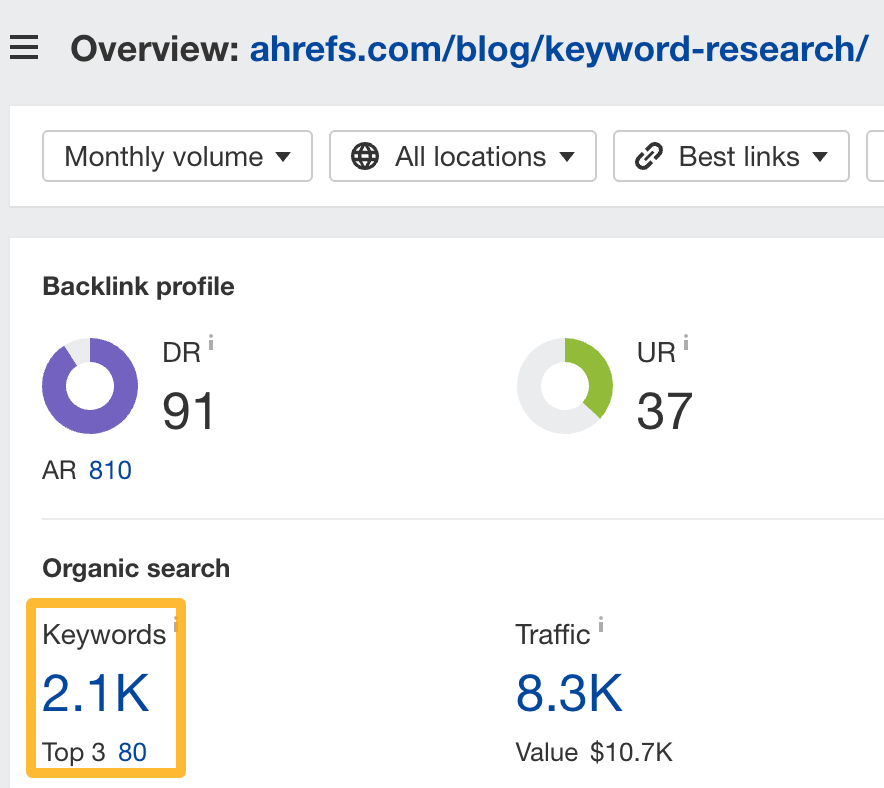
Most of them are simply variations of the main topic of “keyword research”:
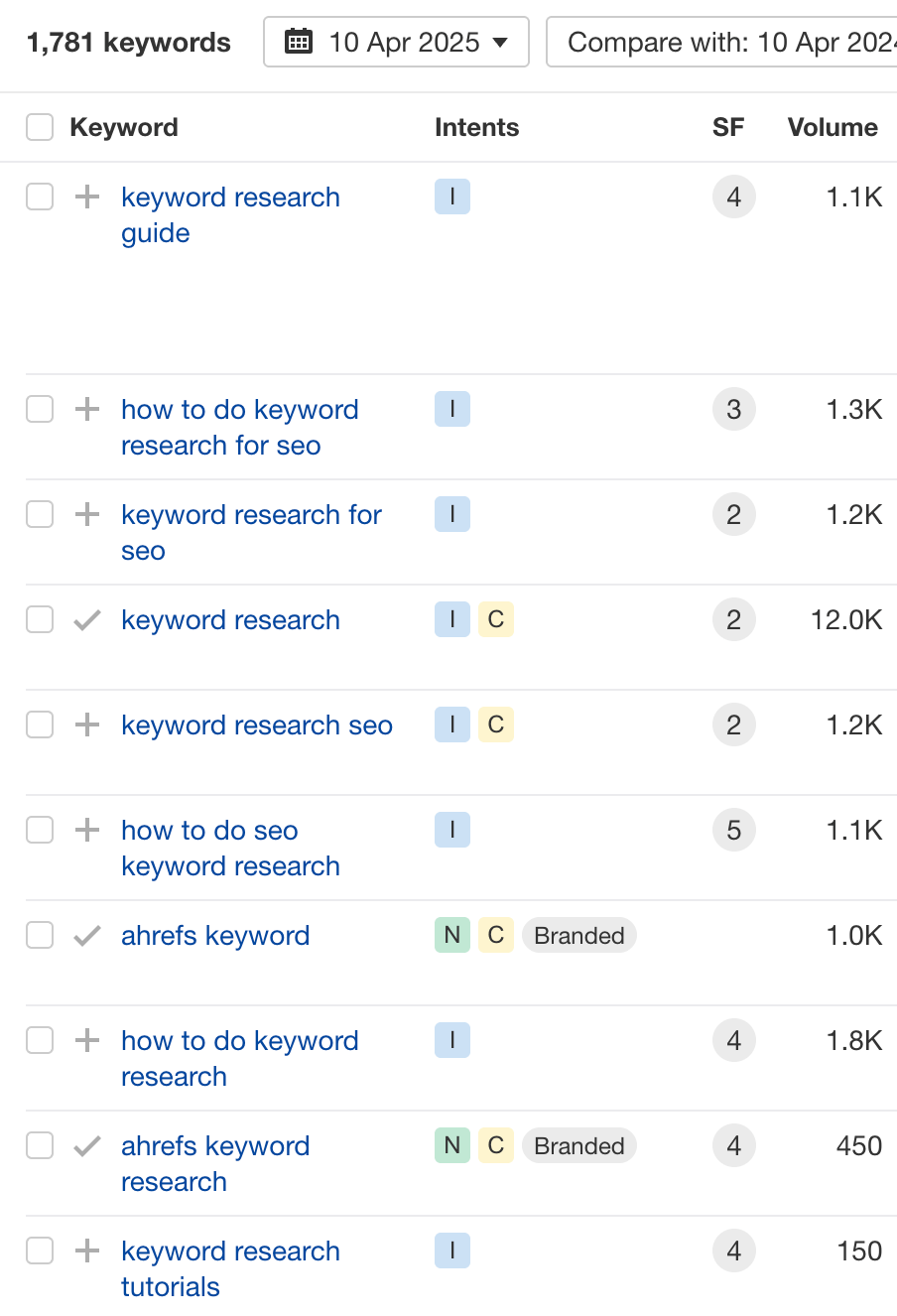
You also want to make sure you’re not targeting a keyword that nobody is searching for. Otherwise, you’ll waste all your time and effort.
How can you find out if you’re targeting the right keyword? Easy: go to Keywords Explorer and enter your target keyword. For example, let’s say I enter “how to create content”. Here’s what I see:

So, search volume tells me that the keyword “how to create content” is searched for 500 times a month. However, it’s likely a subtopic and not a main one because its overall Traffic Potential is much higher at 1,200.
Sidenote.
Traffic Potential is the total amount of organic traffic that the #1 ranking page for your target keyword gets from all the keywords it ranks for.
Parent Topic tells me that the likely main topic is “content creation”. So, this topic is worth targeting because it has a high traffic potential but we should be targeting “content creation” instead (and not “how to create content”.)
Ranking #1 means nothing if it doesn’t help your bottom line. You don’t just want search traffic; you want search traffic that converts to customers.
Before you chase a keyword, assign it a Business Potential score.
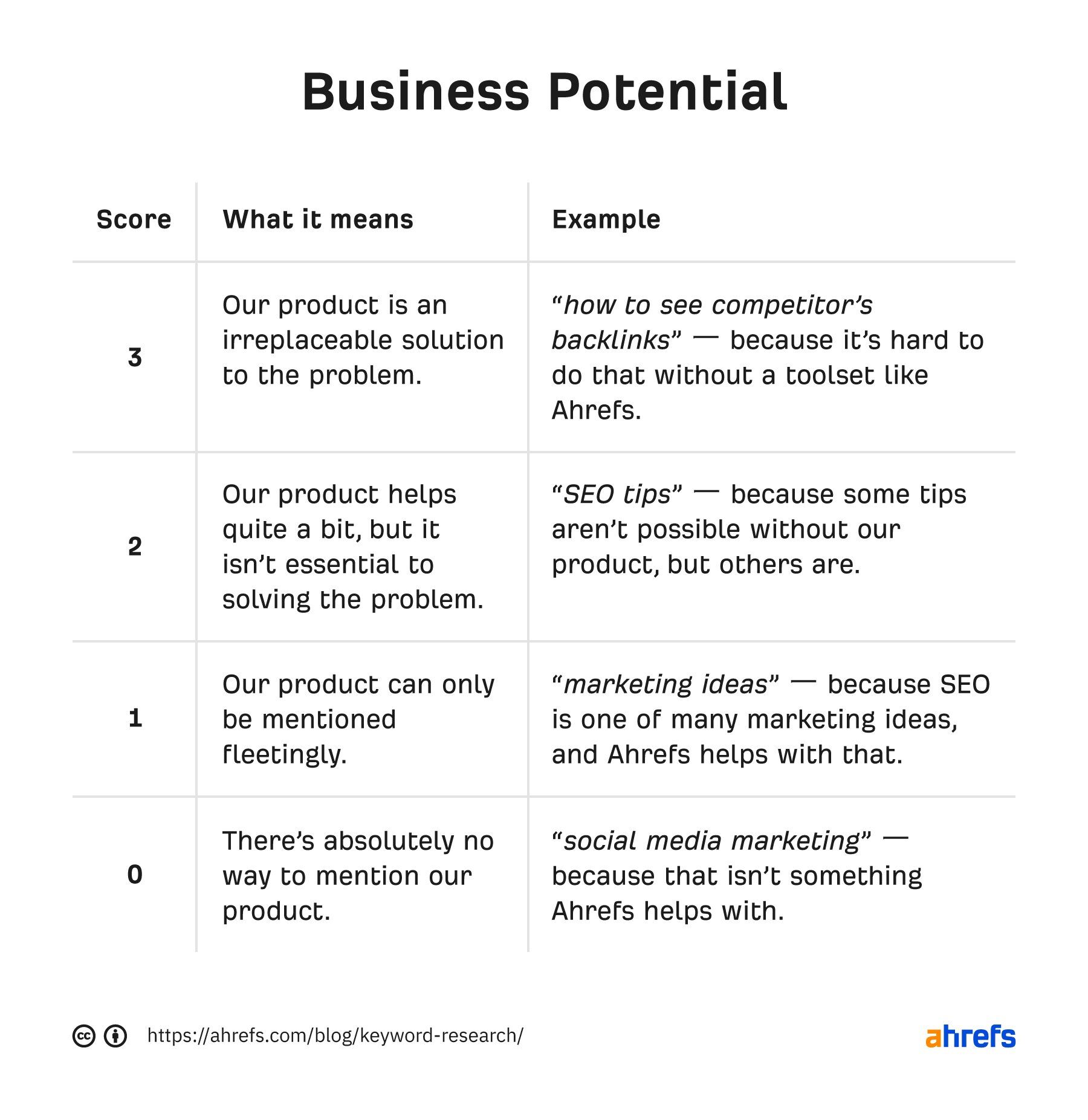
For example, the topic “keyword research” scores a “3”, because it’s nearly impossible to do good keyword research without a tool. For “content creation”, it’s likely a “2” because you can make content without a tool, but you can do it even better with one.
You want to prioritize keywords that score at least a 2 and above.
Sure that your target keyword is the keyword you want? Awesome. Now you need to know what Google wants to rank.
Google ranks pages that best satisfy what people are looking for. So, if your content doesn’t match what users expect to see, you won’t rank.
How do you know what Google is looking for? Easy: look at the SERPs to figure out search intent.
For example, if we look at the top-ranking pages for “content creation”, we see that they’re mostly beginner’s guides on content creation:
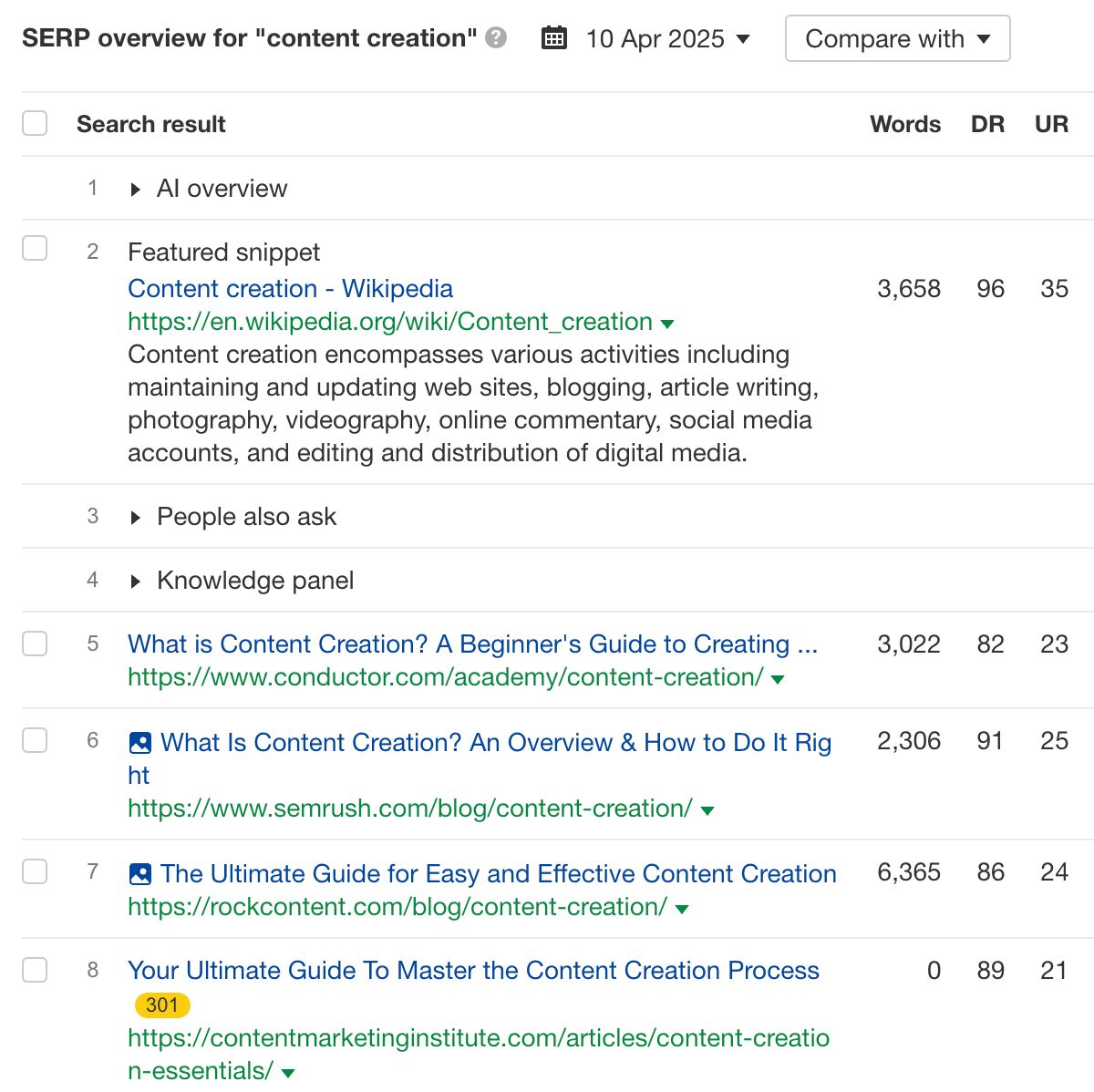
An even faster way to figure out search intent is to simply click the Identify intents button in Keywords Explorer:

So, if we want to rank for this keyword, we’ll likely have to make a beginner’s guide that covers what content creation is, how to create, and more.
Further reading
Even Google’s Helpful Content guidelines ask: “Does the content provide a substantial, complete, or comprehensive description of the topic?”
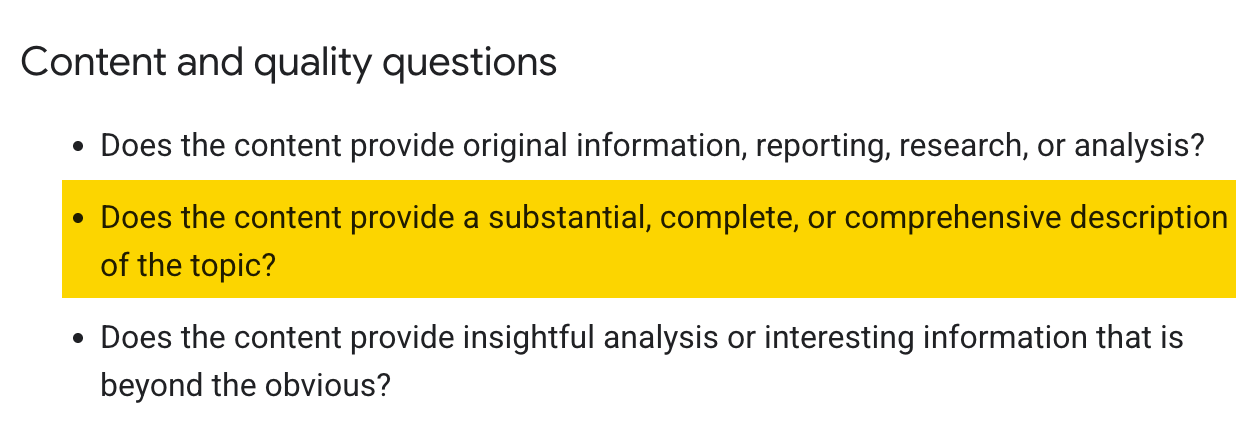
To find out what subtopics you should cover, enter your keyword into AI Content Helper and it’ll suggest subtopics to cover. For example, here’s what it suggests for “content creation”:
- What is content creation
- AI in content creation
- Steps involved in creating content (e.g., ideation, planning, creation, etc.)
- Content performance analytics
- Role of SEO in content creation
- Content strategy
- Types of content
- Content creation tools
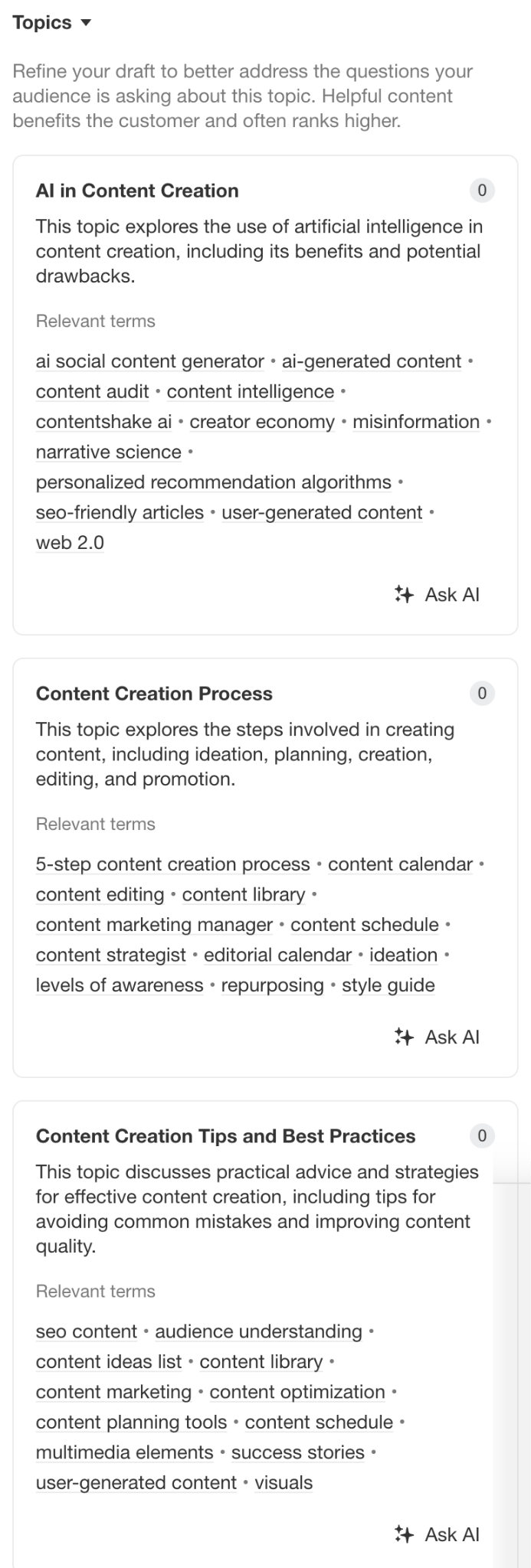
All important subtopics if you want to create a comprehensive beginner’s guide.
Even if you manage to create the most comprehensive guide ever, you’ll still fail if your content looks and feels like everything else out there.
Your content needs a unique angle that makes people think, “Wow, I’ve never seen it presented this way before!”
How do you find these unique angles? There are three approaches:
- Experimentation: Be the original source and create your own data that others will want to cite. Conduct a mini-experiment, run a poll, or collect data from your user base.
- Experience: Anyone can write theory. Few can write from hard-won experience. Share your firsthand insights from doing or trying something.
- Effort: Most content creators are lazy. Use that to your advantage. What could you add to your content that would make competitors look at it and think, “That would be too much work”?
For example, when Ryan Law, our Director of Content Marketing wanted to write about the best AI image generators, he didn’t just list them out. He actually went and tested all of them:
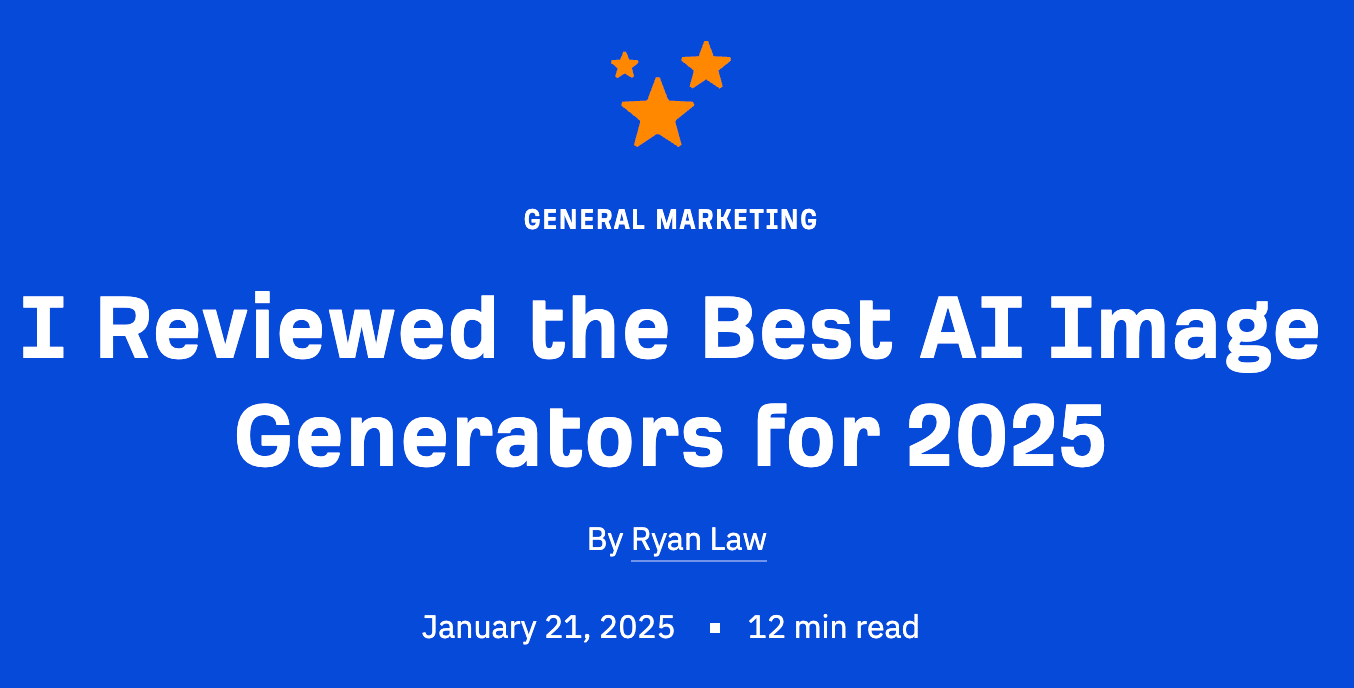
Further reading
Further reading
Likewise for podcast link building: you offer free insights as a guest and the podcast host links back to you.
That’s why I say you need a unique angle for your content. If you have data, stories, or design that no one else has, it makes acquiring links an easier sell to other websites.
Link building is a massive topic on its own, so I recommend reading our guide to link building to learn how it works.
Firstly, don’t panic. Take a deep breath.
Google’s AI Overviews still need source material to generate their summaries. And that source material or citation, at least at the moment, still comes from search.
So, whether you want to call it LLMO, GEO, or the name of the week, it’s no different from SEO. At least for the time being. I highly recommend reading Ryan’s post on why this is so.
Tl;dr: The strategy remains fundamentally the same: Create exceptional, comprehensive, uniquely valuable content that serves user needs better than anything else out there.
Final thoughts
Even perfect content won’t rank if search engines can’t properly access and understand your site. Technical SEO issues can silently undermine your ranking efforts.
I recommend signing up for our free Ahrefs Webmaster Tools and running a crawl of your website. Catching and fixing glitches early can save you from mysteriously missing out on search traffic.
Similar Posts
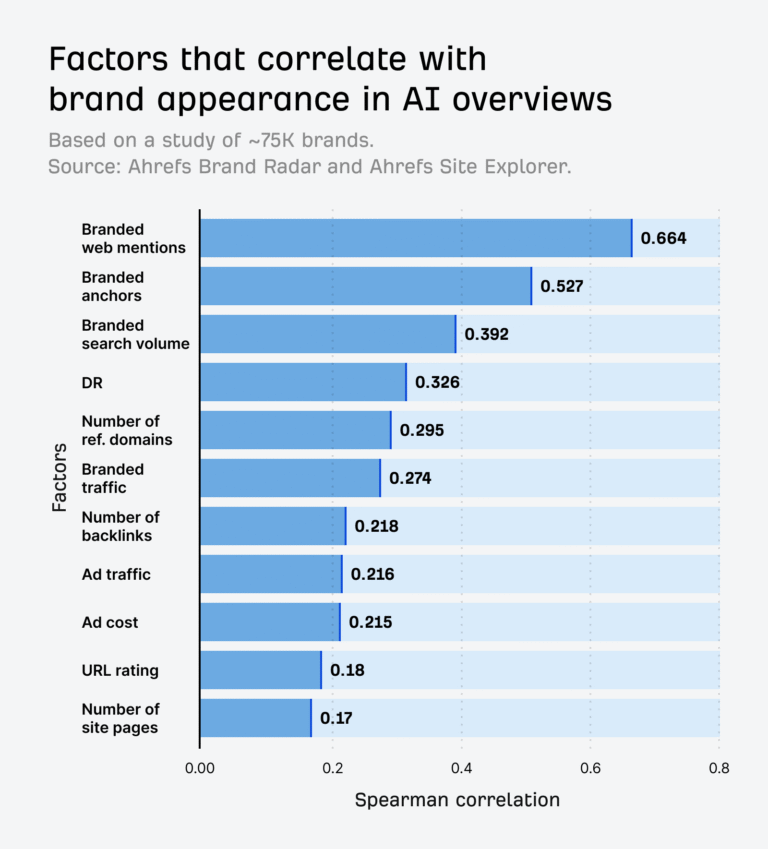
What We Actually Know About Optimizing for LLM Search
When you search on the internet, there’s a good chance LLMs are involved somewhere in the process. If you want any chance of visibility in LLM search, you need to understand how to make your brand visible in AI answers. The latest wave of experts claim to know the “secret” to AI visibility, but the…

AI Makes Up 0.1% of Traffic, but Clicks Aren’t Everything
While AI traffic is growing as a referral source, Google still dominates by a factor of 345x, and Reddit out-refers all three major AIs combined. As it stands AI traffic isn’t making much of a dent, so is it worth pursuing? Here’s what we know so far… Sidenote. Thanks to our data scientist Xibeijia Guan for…
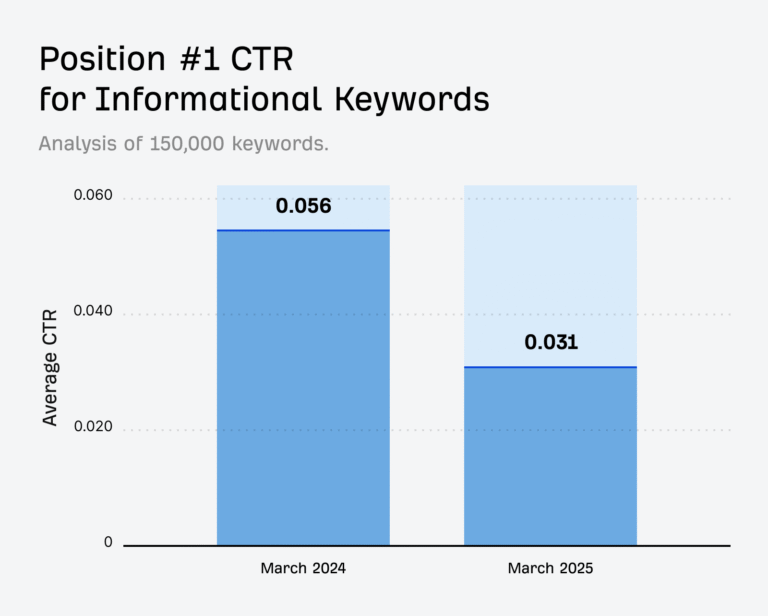
AI’s Impact on SEO: 13 Things That Changed, 4 Things That Stayed The Same
AI assistants like ChatGPT, Gemini, and Perplexity have become the new places people turn to for answers—handling millions of prompts every day. Even Google now uses AI to generate summaries right at the top of search results. This shift happened fast. In 2024, AI Overviews rolled out to millions of searches, ChatGPT climbed into the…

16 Top Search Engines in 2025 (Including Google Alternatives)
What are the top search engines in the world? It depends on what you’re looking for. Slowly disappearing are the days when just one search engine dominates over the rest. The Internet is fragmenting, and people may choose a search engine over others because of specific use cases. So, here are the top search engines, classified…
New and Updated Tutorials for Drupal 11
TL;DR; We’ve added a new tutorial, Upgrade to Drupal 11. And, we’ve updated all tutorials and code in our Drupal Module Developer Guide for compatibility with Drupal 11. Upgrade to Drupal 11 is new free tutorial in the course, Upgrade Drupal, and part of our Keep Drupal Up-To-Date guide. If your site is on Drupal…
We Updated the Drupal User Guide for Drupal 11
Drupal 11 was released recently. Yay 🎉. And with it comes a bunch of minor (and sometimes major) changes to the way Drupal works and the need to update the documentation to reflect those changes. Since we first helped coordinate its creation, we’ve been committed to helping keep the Drupal User Guide content on Drupal.org…
